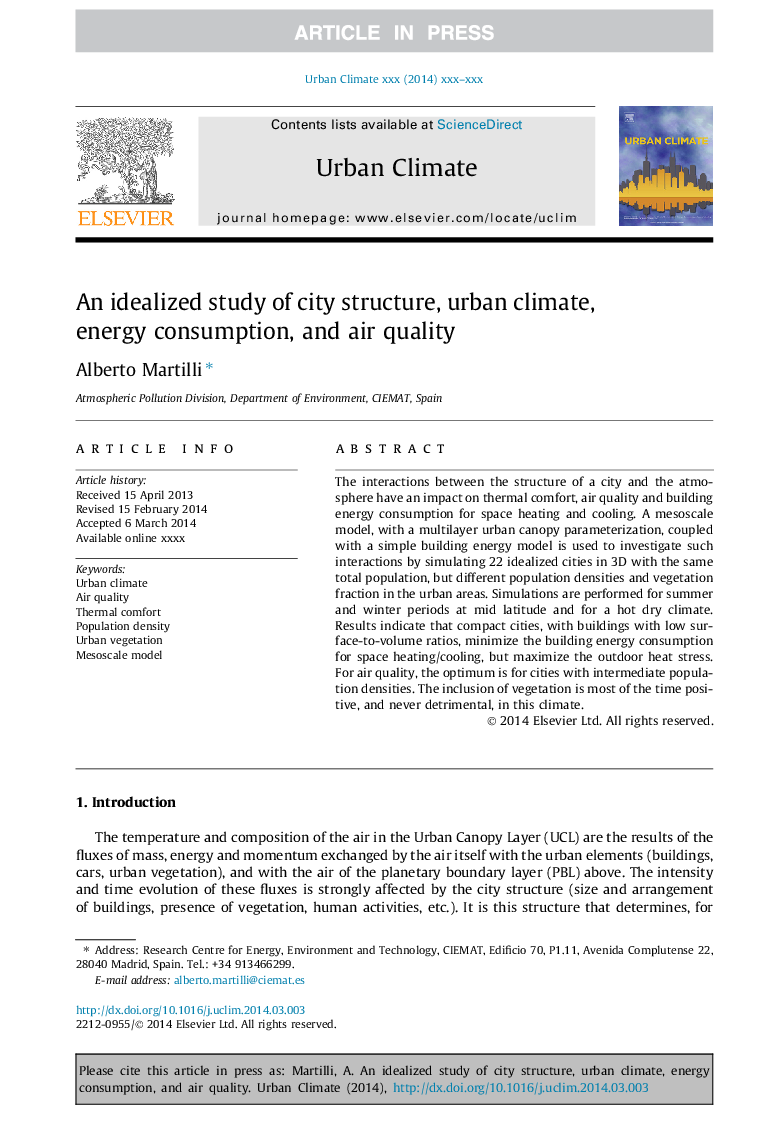| Article ID | Journal | Published Year | Pages | File Type |
|---|---|---|---|---|
| 10260299 | Urban Climate | 2014 | 17 Pages |
Abstract
The interactions between the structure of a city and the atmosphere have an impact on thermal comfort, air quality and building energy consumption for space heating and cooling. A mesoscale model, with a multilayer urban canopy parameterization, coupled with a simple building energy model is used to investigate such interactions by simulating 22 idealized cities in 3D with the same total population, but different population densities and vegetation fraction in the urban areas. Simulations are performed for summer and winter periods at mid latitude and for a hot dry climate. Results indicate that compact cities, with buildings with low surface-to-volume ratios, minimize the building energy consumption for space heating/cooling, but maximize the outdoor heat stress. For air quality, the optimum is for cities with intermediate population densities. The inclusion of vegetation is most of the time positive, and never detrimental, in this climate.
Related Topics
Physical Sciences and Engineering
Earth and Planetary Sciences
Earth and Planetary Sciences (General)
Authors
Alberto Martilli,
